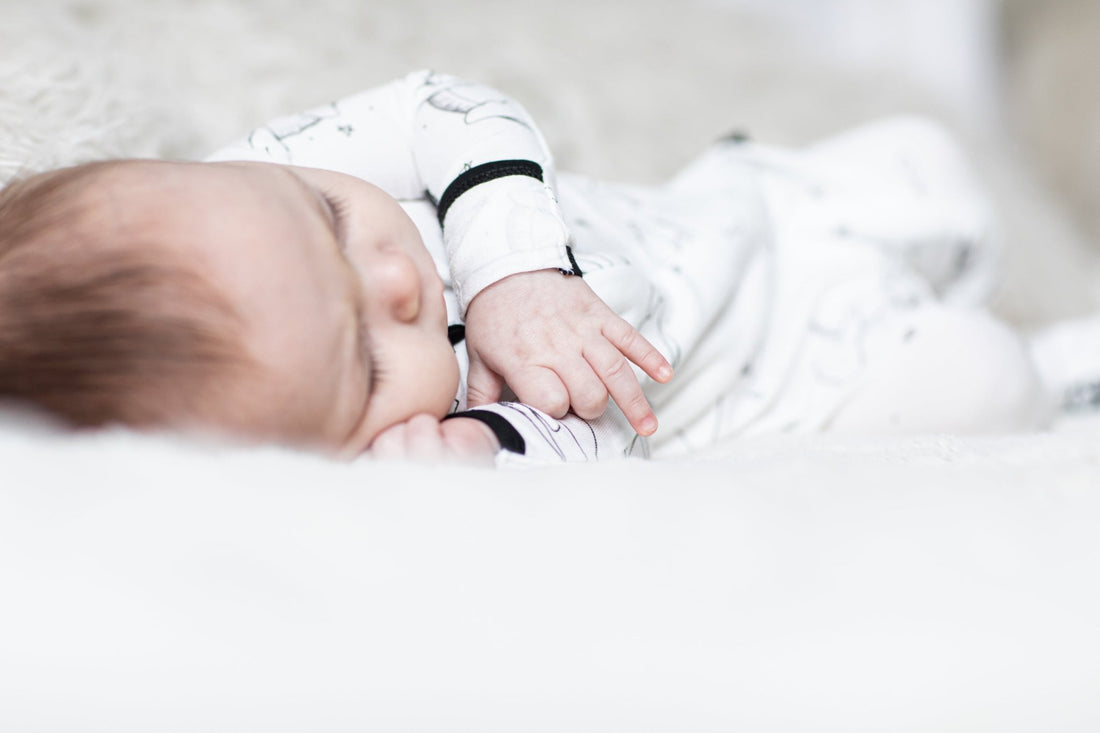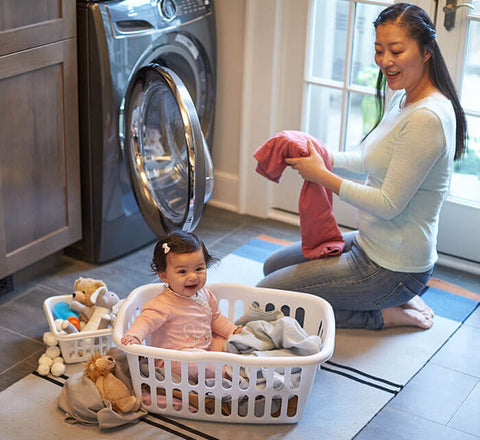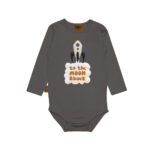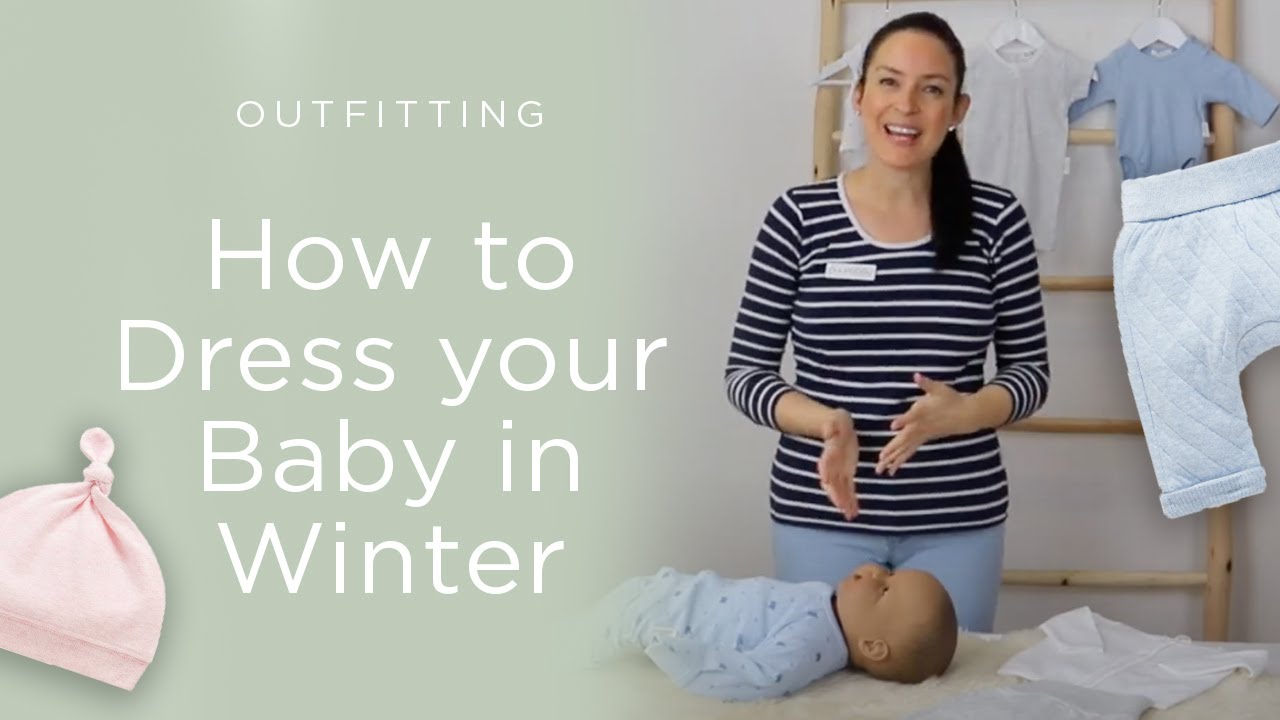Caring for newborn clothes can seem overwhelming. These tiny garments need special attention.
Understanding how to wash and care for them properly is essential for your baby’s health and comfort. Newborn clothes are delicate and often made from sensitive fabrics. They need gentle handling to avoid irritation on your baby’s soft skin. Knowing the right methods for washing and caring for these clothes helps keep them fresh and safe.
In this blog post, we’ll share practical tips to make the process easier. From choosing the right detergent to proper drying techniques, these tips will help you maintain your baby’s clothes in the best condition. Let’s dive into some effective ways to care for your little one’s wardrobe.

Credit: peregrinekidswear.com
Choosing The Right Detergent
Newborn clothes require special care. Choosing the right detergent is crucial. It helps in keeping your baby’s skin safe. Regular detergents can cause irritation or allergic reactions. Therefore, it is essential to select a detergent that is safe for your baby.
Hypoallergenic Options
Hypoallergenic detergents are designed to minimize the risk of allergies. They are free from dyes and harsh chemicals. These detergents are gentle on a baby’s sensitive skin. They are also effective in removing stains.
- Look for labels that say “hypoallergenic”.
- Check ingredient lists for known allergens.
- Opt for detergents with minimal additives.
Fragrance-free Choices
Fragrance-free detergents are another good option. Fragrances can sometimes cause skin irritation or respiratory issues. Choosing a fragrance-free detergent reduces these risks.
| Brand | Features |
|---|---|
| Brand A | Hypoallergenic, Fragrance-Free |
| Brand B | Organic, Gentle on Skin |
When selecting a detergent, always read the label. Ensure it is safe for newborns. This small step helps in protecting your baby’s delicate skin.
Pre-washing Newborn Clothes
Newborn clothes are delicate and need special care. Pre-washing these clothes is crucial before your baby wears them. This ensures the removal of any chemicals and dirt from manufacturing and packaging. Let’s explore why pre-washing is essential and the best techniques to do it right.
Importance Of Pre-washing
Pre-washing helps in removing harmful chemicals and residues. These can irritate your baby’s sensitive skin. It also softens the fabric, making it comfortable for your baby. New clothes often have tiny loose fibers and dust. Washing them first ensures cleanliness and safety.
Best Techniques
Use a mild detergent free from harsh chemicals. This will protect your baby’s skin. Wash newborn clothes separately from the rest of the laundry. This prevents any contamination from other clothes. Set the washing machine on a gentle cycle. This avoids damage to delicate fabrics. Always rinse the clothes thoroughly. Ensure no detergent remains on the fabric. Dry the clothes naturally, preferably in the sun. Sunlight helps kill any remaining germs and bacteria.
Sorting Baby Laundry
Sorting baby laundry is an essential step to ensure clothes stay clean and fresh. Newborns have sensitive skin, so taking extra care when washing their clothes is important. Sorting clothes properly can help preserve their quality and prevent any potential irritations.
Color Separation
Separate baby clothes by color. Divide whites, lights, and darks into different piles. This prevents color bleeding and keeps clothes looking new. Baby clothes often have bright colors, and you don’t want them to fade or stain each other.
Fabric Type Considerations
Different fabrics need different care. Sort baby clothes by fabric type. Separate delicate fabrics from sturdy ones. For example, keep cotton and wool separate. This way, you can use the right wash settings for each type. Delicate fabrics need gentle cycles, while sturdy ones can handle more rigorous washing.
Washing Temperature Guide
Understanding the right washing temperature for newborn clothes is essential. It keeps them clean and safe for your baby’s delicate skin. This guide will help you choose the ideal water temperature and avoid shrinkage.
Ideal Water Temperature
Choosing the right water temperature is crucial. Hot water can kill most germs and bacteria. But, it can also damage delicate fabrics.
Use warm water (around 90°F or 32°C) for everyday baby clothes. It’s gentle on fabrics and still effective in cleaning.
For heavily soiled clothes, you may need to use hotter water. But, check the clothing labels first. Some fabrics can shrink or get damaged with high temperatures.
Avoiding Shrinkage
Shrinkage is a common issue with baby clothes. To avoid it, always check the care labels on each item.
Most baby clothes are made from cotton or a cotton blend. Cotton can shrink in hot water. To prevent shrinkage, use cold water (below 80°F or 27°C) for these items.
Drying clothes on high heat can also cause shrinkage. Opt for air drying or use a low-heat setting on your dryer.
In summary, always read the labels and choose the right washing temperature. This ensures your baby’s clothes stay in good condition and fit properly.
Stain Removal Tips
Newborns are adorable but can be messy. Baby clothes often get stained. Knowing how to remove these stains helps keep the clothes looking new. Here are some effective tips for removing common baby stains.
Common Baby Stains
Babies are prone to various stains. These include:
- Milk stains: Whether from breastfeeding or formula, milk can leave marks.
- Spit-up: Babies spit up often, leading to stains on clothes.
- Food stains: As babies start solid foods, their clothes get stained with purees and juices.
- Diaper leaks: Diapers can leak, causing tough stains.
- Grass stains: Older babies exploring outdoors may get grass stains.
Effective Stain Removers
Using the right stain remover is key. Here are some options:
| Stain Remover | Description |
|---|---|
| Baking Soda | Mix with water to form a paste. Apply on stains for 30 minutes before washing. |
| White Vinegar | Soak clothes in a solution of one part vinegar to two parts water. |
| Lemon Juice | Effective for fruit and spit-up stains. Apply directly and let sit. |
| Hydrogen Peroxide | Use on tough stains. Mix with water and apply to the stain. |
| Baby Detergent | Specially formulated for baby clothes. Gentle yet effective on stains. |
Pre-treat stains as soon as possible. This increases the chances of complete removal. Also, avoid using hot water on protein-based stains. This sets the stain permanently.
Drying Baby Clothes
Drying baby clothes is a crucial step in ensuring their longevity and softness. Babies have delicate skin, so proper drying methods are essential to avoid irritation. In this section, we will explore the best ways to dry baby clothes, focusing on air drying and machine drying. We will also discuss tips to prevent fabric damage.
Air Drying Vs. Machine Drying
Air drying baby clothes is gentle and helps maintain fabric quality. Hang clothes on a clothesline or drying rack. Ensure they are spread out evenly. This method prevents shrinkage and keeps clothes soft. It is also energy-efficient and eco-friendly.
Machine drying is convenient, especially for busy parents. Use a low heat setting to protect delicate fabrics. High heat can cause shrinkage and damage. Check clothes frequently to avoid over-drying. Use dryer balls to keep clothes fluffy and soft.
Preventing Fabric Damage
Always read the care labels on baby clothes before drying. Some fabrics require special care. Turn clothes inside out to reduce friction and fading. Avoid overloading the dryer to ensure clothes dry evenly.
Use a gentle detergent designed for babies. Harsh chemicals can weaken fabrics. Consider using a fabric softener to keep clothes gentle on baby’s skin. Avoid using bleach as it can damage fibers and cause irritation.
Check for loose threads and buttons before drying. Repair any issues to prevent damage. Store baby clothes in a cool, dry place. Proper storage helps maintain their quality for longer.
Ironing And Folding
Taking care of newborn clothes can be a delicate task. Ironing and folding are two key steps to ensure the clothes remain in good condition. Proper care keeps the clothes soft and safe for your baby. Below, you’ll find some tips on when to iron baby clothes and how to fold them correctly.
When To Iron Baby Clothes
Not all baby clothes need ironing. Always check the care label for instructions. Some fabrics may not require ironing or may be damaged by it. Ironing can help remove germs and ensure the clothes are smooth against your baby’s skin. Use a low-heat setting to avoid burns.
Cotton and linen clothes often benefit from ironing. These fabrics can wrinkle easily and ironing helps keep them neat. Avoid ironing clothes with prints or embellishments. High heat can damage these details.
Ironing tips:
- Use a clean iron.
- Set the iron to the lowest heat setting.
- Iron inside out to protect the fabric.
Proper Folding Techniques
Folding baby clothes correctly saves space and keeps them organized. Here are some simple steps to follow:
- Lay the clothes flat on a surface.
- Fold the sleeves inward.
- Fold the garment in half, bringing the bottom to the top.
- Smooth out any wrinkles as you fold.
Onesies and sleepers should be folded in a specific way. Fold the sleeves inward, then fold the garment in half vertically. For pants, fold each leg inward, then fold in half. Keeping clothes folded neatly helps them stay in good condition.
Folding tips:
- Use drawer dividers for better organization.
- Group similar items together.
- Store heavier clothes at the bottom.
| Item | Folding Method |
|---|---|
| Onesies | Fold sleeves inward, then in half vertically |
| Pants | Fold legs inward, then in half |
| Socks | Pair together, then roll |
Storing Baby Clothes
Storing baby clothes properly ensures they stay clean and fresh. Newborn clothes are delicate and need special care, even when not in use. Proper storage can help you keep them in good condition for the next use. Here are some tips for storing baby clothes effectively.
Optimal Storage Conditions
Choose a cool, dry place for storing baby clothes. Humidity can cause mold and mildew, which can damage the fabric. A closet or drawer works well for keeping clothes safe from dust and pests. Ensure the storage area is clean and free from any moisture.
Use breathable storage containers. Plastic containers can trap moisture and lead to mold growth. Cotton or linen bags are better options. They allow air circulation and protect clothes from dust.
Avoiding Moth Damage
Moths can damage baby clothes. To prevent this, use natural repellents like lavender or cedar. These are safe for babies and effective in keeping moths away. Place them in the storage area along with the clothes.
Avoid storing baby clothes with food or scented items. These can attract pests. Clean clothes before storing them. Dirty clothes can attract moths and other insects.
Check stored clothes regularly. Look for signs of pests and damage. Early detection can help you save the clothes before the damage becomes severe.
Handling Special Fabrics
Newborn clothes often include special fabrics that need extra care. Handling these delicate materials properly ensures your baby’s comfort and extends the life of the garments. Let’s dive into some tips for washing and caring for newborn clothes made of special fabrics.
Wool And Cashmere
Wool and cashmere are soft and warm, perfect for your little one. But they need gentle handling. Follow these tips:
- Hand wash these fabrics using lukewarm water. Avoid hot water as it can shrink the fabric.
- Use a mild detergent designed for wool. Regular detergents can be too harsh.
- Gently squeeze the water out. Never wring or twist.
- Lay the garment flat on a clean towel. Roll up the towel to absorb excess water.
- Reshape the garment and dry flat to maintain its shape.
Silk And Satin
Silk and satin are luxurious and gentle on a baby’s skin. To care for these fabrics:
- Hand wash in cold water. Hot water can damage the fibers.
- Use a gentle detergent made for delicate fabrics.
- Do not scrub or wring the fabric. This can cause wrinkles and damage.
- Rinse thoroughly in cold water. Ensure all detergent is removed.
- Blot excess water with a clean, dry towel.
- Lay the fabric flat or hang to dry in a shaded area. Avoid direct sunlight.
Proper care of special fabrics ensures your newborn’s clothes stay soft and comfortable. Follow these simple steps to maintain the quality and appearance of wool, cashmere, silk, and satin garments.

Credit: peregrinekidswear.com
Eco-friendly Laundry Practices
Eco-friendly laundry practices are essential for caring for newborn clothes. They help the environment and keep your baby’s clothes safe. Using organic detergents and saving water are key steps. These methods ensure your baby’s clothes remain soft and clean without harsh chemicals.
Organic Detergents
Choose organic detergents for washing newborn clothes. They contain natural ingredients and are free of harmful chemicals. Organic detergents are gentle on your baby’s sensitive skin. They also reduce the risk of allergies and skin irritation. Look for labels that indicate the detergent is eco-friendly and baby-safe.
Water-saving Tips
Use a high-efficiency washing machine to save water. These machines use less water and energy than standard models. Wash full loads instead of small ones to maximize water use. Consider using cold water for washing. Cold water cleans effectively and saves energy. Also, try hand washing small items to reduce water usage.
Travel Laundry Tips
Traveling with a newborn can be exciting yet challenging. One of the challenges is keeping your baby’s clothes clean. Here are some practical tips to help you manage laundry while traveling.
Portable Washing Solutions
When traveling, you may not always have access to a washing machine. In such cases, consider portable washing solutions. These are small, lightweight, and easy to carry. Here are a few options:
- Travel-sized detergent: These are perfect for hand washing a few clothes in a sink.
- Collapsible wash basins: They take up little space and are handy for washing baby clothes.
- Scrubba Wash Bag: This is a portable, pocket-sized washboard. It allows you to wash clothes anywhere.
Using these solutions ensures your baby’s clothes stay fresh and clean, even while you travel.
Quick Drying Methods
Drying clothes quickly is crucial when traveling. Here are some quick drying methods to ensure your baby’s clothes are ready to wear in no time:
- Microfiber Towels: After washing, roll the clothes in a microfiber towel. This absorbs excess water quickly.
- Travel Clothesline: These are compact and can be hung anywhere. They are perfect for drying clothes overnight.
- Portable Fan: Use a small portable fan to speed up the drying process.
- Sunlight: If possible, dry clothes in sunlight. It is a natural and effective way to dry clothes fast.
By using these methods, you can ensure your baby’s clothes are always clean and dry, making your travel experience smoother and more enjoyable.
Dealing With Allergies
Dealing with allergies is a critical aspect of caring for newborn clothes. Newborns have sensitive skin that can easily react to allergens. This makes it essential to take special care while washing and handling their clothes.
Identifying Allergens
Allergens can be found in many places. Laundry detergents, fabric softeners, and even clothing materials can cause reactions. Look for signs like redness, rashes, or itching on your newborn’s skin.
Choose hypoallergenic products. Read labels carefully. Avoid detergents with strong fragrances or harsh chemicals. Consider using natural or organic products.
Safe Laundry Practices
Wash newborn clothes separately. This avoids cross-contamination with other household laundry. Use a gentle cycle on your washing machine. Set the water temperature to warm or hot to kill germs.
Rinse clothes thoroughly. Ensure no detergent residue remains. Consider adding an extra rinse cycle. Avoid using fabric softeners and dryer sheets, as they may contain allergens.
Dry clothes in the sun, if possible. Sunlight can naturally sanitize clothing. Store clean clothes in a dry, dust-free area. This minimizes exposure to allergens.
Long-term Clothing Care
Gently wash newborn clothes using mild detergent and cold water. Avoid fabric softeners and air dry to maintain softness.
Caring for newborn clothes ensures they remain in good condition. Proper care can extend their lifespan. This also makes them suitable for future use.Preventing Wear And Tear
Choose gentle washing cycles to protect delicate fabrics. Always use mild detergents. Harsh chemicals can damage the fibers. Avoid overloading the washing machine. This reduces friction and prevents damage. Dry clothes naturally whenever possible. High heat from dryers can weaken fabric. Use mesh bags for tiny socks and mittens. This prevents them from getting lost or tangled.Hand-me-down Preparation
Sort clothes by size and season for easier storage. Clean and dry them thoroughly before storing. Moisture can lead to mold and mildew. Use airtight containers to keep clothes fresh. Label containers for easy identification. Inspect clothes for stains and repair small tears. This prepares them for the next baby. Donate or pass on well-cared-for clothes to friends and family. “`
Credit: www.fabricareofgreenville.com
Frequently Asked Questions
How Often Should I Wash Newborn Clothes?
Wash newborn clothes after each wear. Babies have sensitive skin. Clean clothes prevent irritation and infections.
What Detergent Is Safe For Newborn Clothes?
Use a mild, fragrance-free detergent. It reduces the risk of skin allergies and irritation in newborns.
Can I Wash Newborn Clothes With The Rest Of The Laundry?
It is best to wash newborn clothes separately. This prevents exposure to harsh chemicals and bacteria from other clothes.
How Should I Dry Newborn Clothes?
Air drying is best. It is gentle on the fabric and helps maintain the softness of newborn clothes.
Conclusion
Caring for newborn clothes is simple with the right tips. Always choose gentle detergents. Wash clothes separately. Follow the care labels. Dry clothes naturally when possible. Avoid harsh chemicals. This keeps your baby’s clothes soft and safe. Remember, clean clothes help keep your baby comfortable and happy.
Use these tips to make laundry time easy and stress-free. Enjoy this special time with your newborn.







